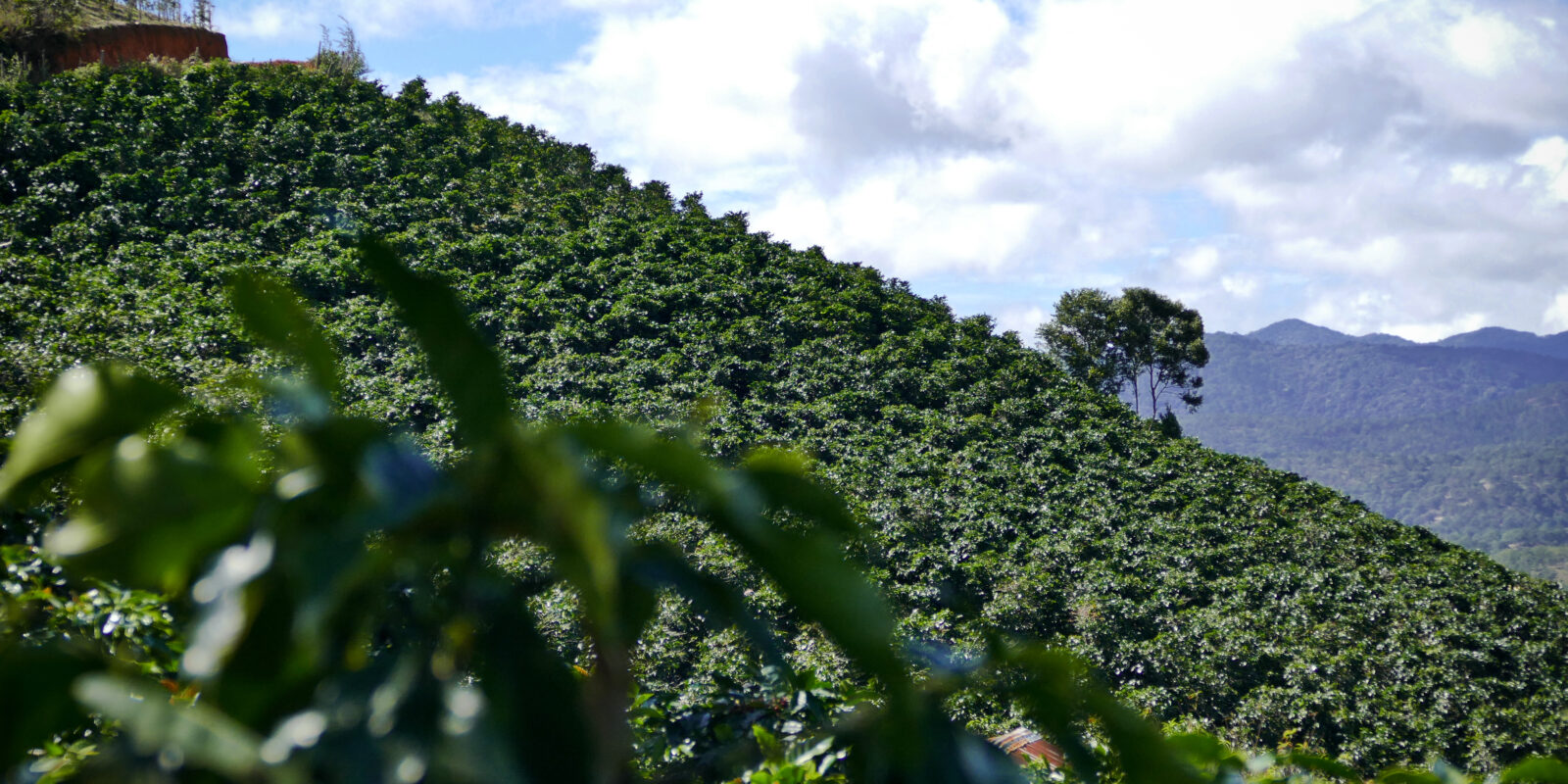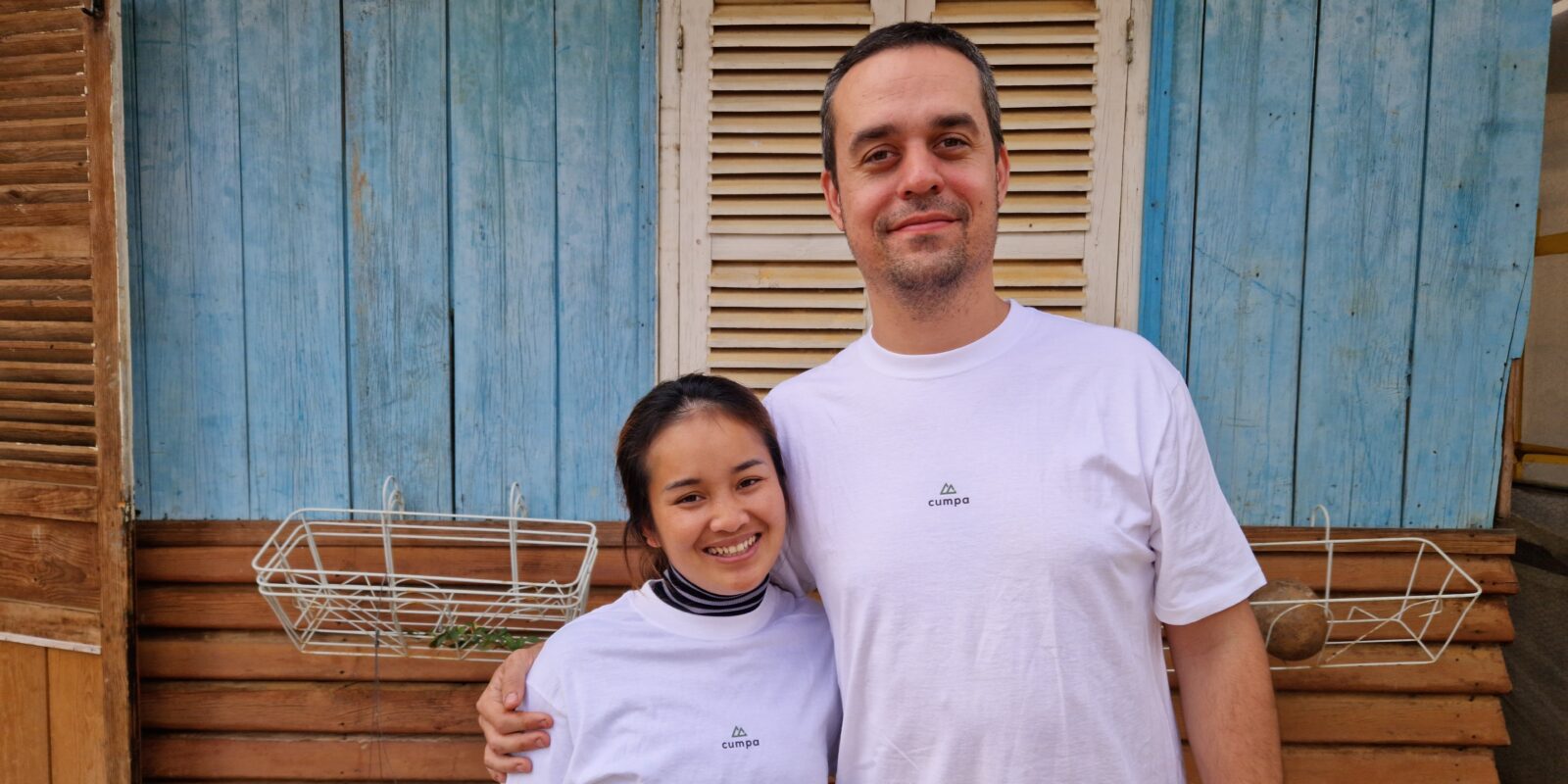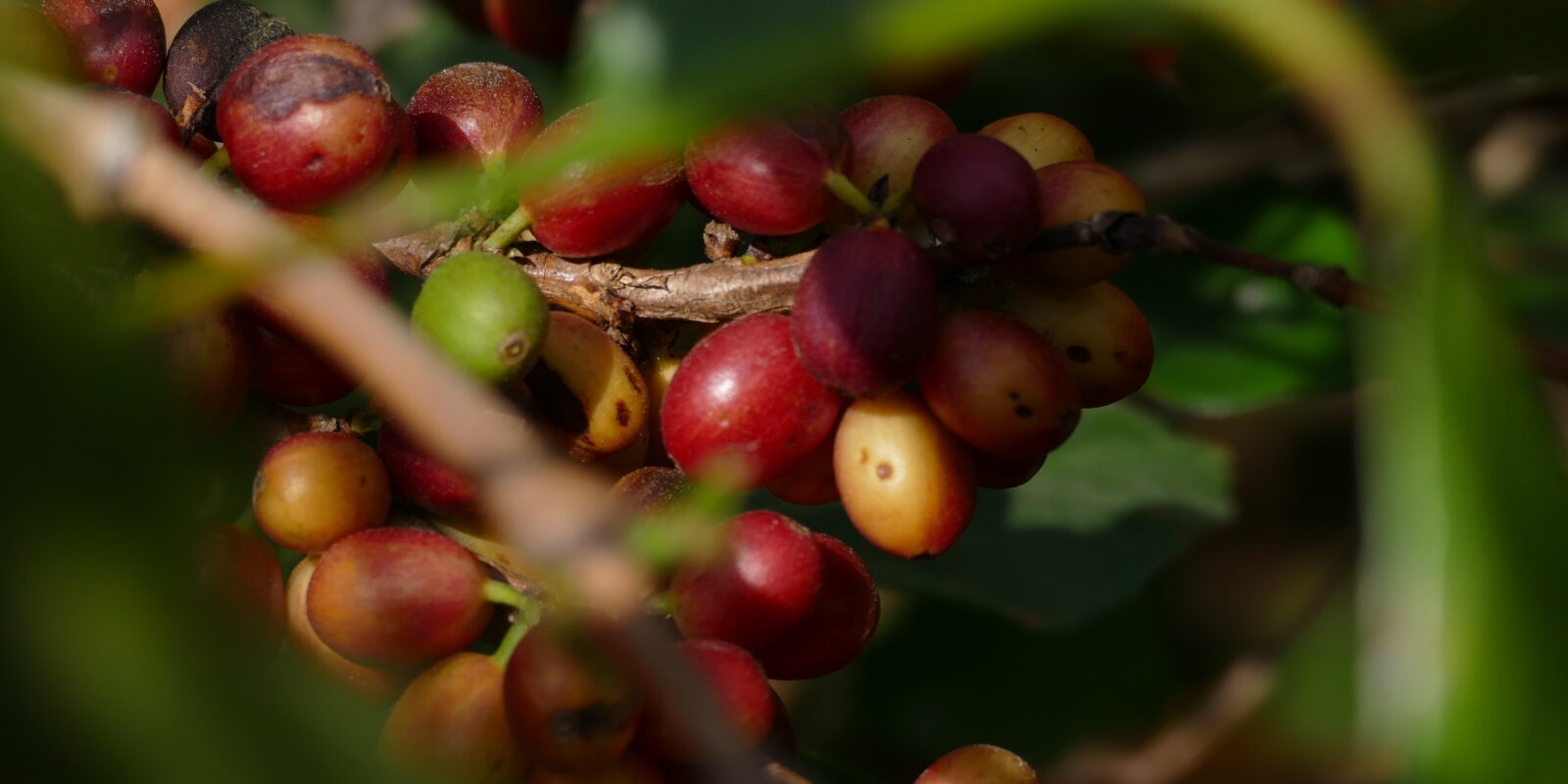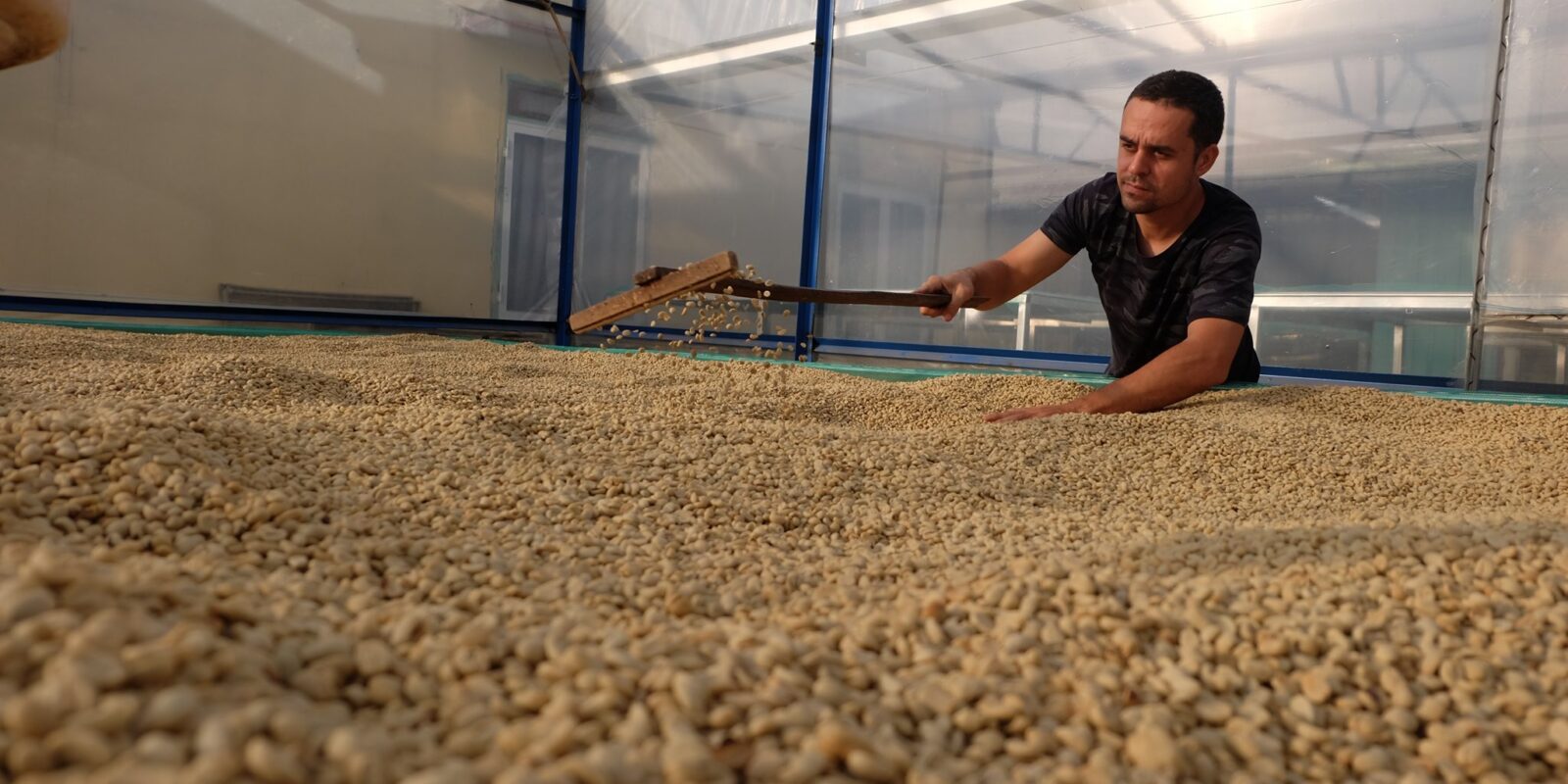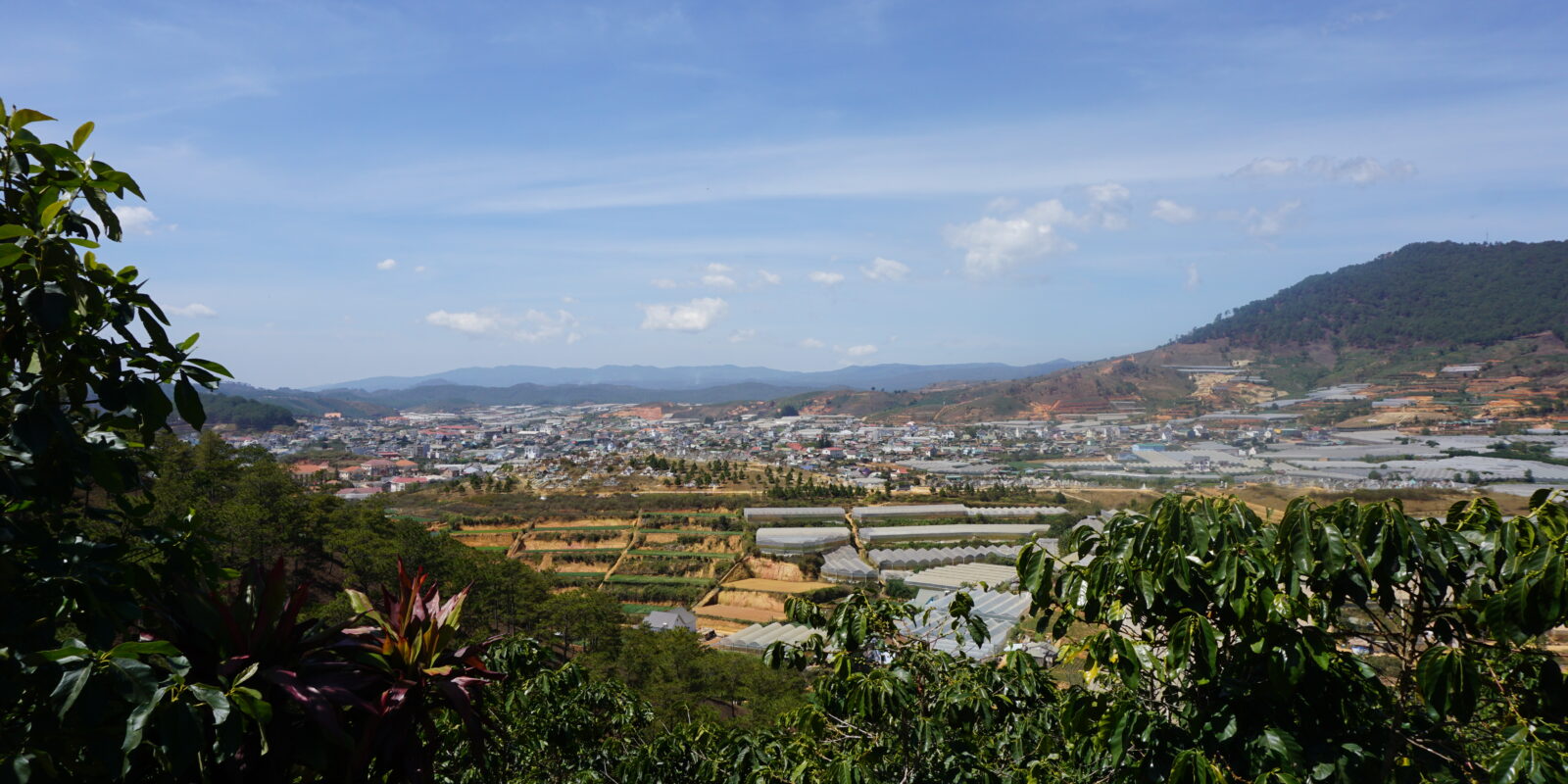LANGBIANG
Zanya Coffee
Lim & Marian
At the foot of the Lang Biang mountain in the South Vietnamese highlands, the representatives of the K’Ho ethnic group live in small villages. They do not call themselves Vietnamese, but see themselves as a separate people with their own language and culture. Traditionally, they live from handicrafts and agriculture in the mountainous areas of Lam Dong province. Lim is a representative of the K’Ho. Her family owns land on which they have cultivated Arabica coffee for generations.
Lim’s Slovakian husband, Marian, first discovered his passion for processing coffee here. The sophisticated processing methods have already improved the family’s living situation. Traditionally, farmers* harvest coffee cherries and sell them to local traders for low profits. After the coffee harvest, they have to go back to seasonal odd jobs that bring in little money. Today, thanks to the specialty coffees, the family can live from coffee cultivation all year round and serves as a good example to the neighbors for a positive perspective in regional coffee cultivation.
Specialty Arabica made in Vietnam
The history of coffee in Vietnam dates back to the 19th century. During their colonial rule in 1857, the French brought different varieties of coffee to cultivate in the mountainous areas of Vietnam. Today, Vietnam is mainly known for Canephora Robusta, which accounts for 90-95% of the cultivated volume. Only in the province of Lam Dong, on the mountain of Lang Biang, the Arabica varieties of the French have been able to survive.
The high altitude, volcanic soil and special climatic conditions have always favored the cultivation of highland coffee here. In addition to hybrid Catimor varieties, one also finds Caturra, Bourbon and Tipica. In the course of time, the different varieties have partly crossed genetically. The coffees of the region are rare and meet with high demand – locally, regionally, nationally and internationally.
Langbiang
Langbiang is not far from the popular tourist town of Đà Lạt, which was also called “Petite Paris” by the French. The pleasantly cool mountain air contrasts with the scorching heat in the lowlands, which is why the former occupiers preferred to spend their vacation time here. The traces of colonialism are still clearly visible today.
Not only the old, magnificent villas and administrative buildings, but also the widespread pine forests and hilly coffee farms are remnants of the former colonial rule. Today, the region attracts millions of tourists every year. And the fresh climate is not only attractive for tourism: investors buy large areas of land to grow flowers and vegetables. More and more brightly shimmering greenhouses are squeezing in between the province’s picturesquely situated coffee farms.
Hotels and resorts are springing up year after year closer to the village of Lang Biang. Many of the farmers can no longer afford to live on the land that once provided a home for their families, and the biodiversity that their ancestors lived on for generations has been lost in many places.
Zanya Coffee
Lim and her family have not sold their land. They firmly believe that the soil, vegetation and climate of Lang Biang Mountain are responsible for the complexity and sweetness of their Arabica coffee. Today, they still live in the traditional turquoise-painted wooden K’Ho huts that once characterized the entire area. Other villagers are following in their footsteps. Together, they are a pioneering generation who hold the destiny of their tribe, their culture, their way of life and their coffee in their hands.
K’Ho
The K’Ho are largely responsible for the efforts in specialty coffee, as they make up the majority of farmers in the region. In the 1990s, pesticides and fertilizers were subsidized by the government as a measure to combat poverty in the region. However, as a result, the soil and crops became increasingly infertile over time.
The K’Ho also understand how to prepare the soil without chemicals and have largely returned to their traditional methods. These include planting shade trees, which add nutrients to the soil and provide homes for native animals. Some of the efforts are now already receiving government funding: A nearby valley, where some of the Zanya farms are also located, has been declared a greenhouse-free zone, according to Marian & Lim, sending a strong message about the future of coffee farming in the region.
We want to help the K’Ho and the other people of the region to preserve their unique culture and to be able to make the production of their unique coffees sustainable. This includes creating structures that help them to be able to hold onto their land and promote processes that restore biodiversity on the fincas.
